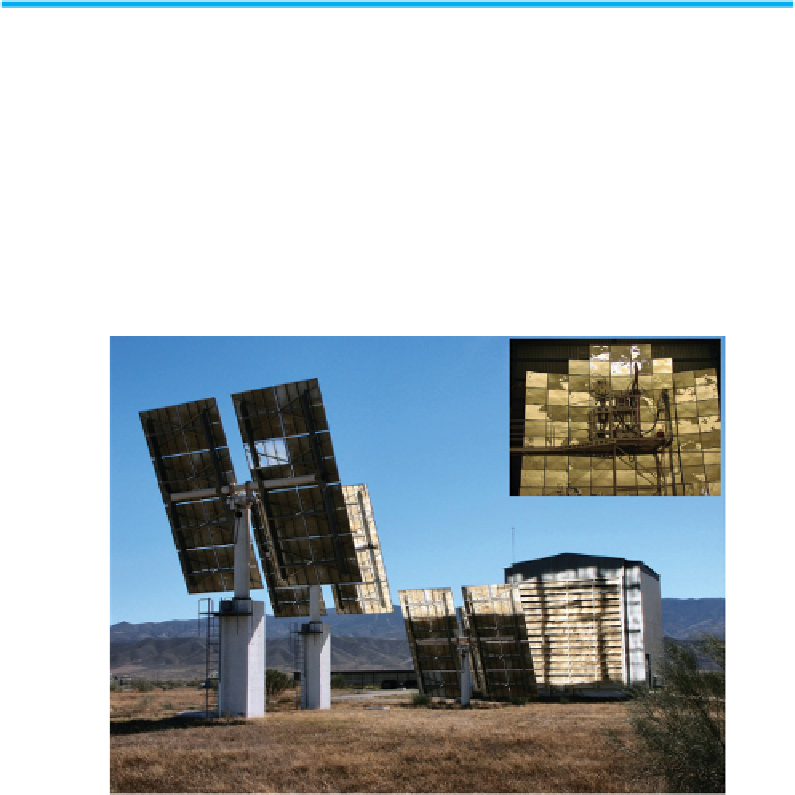Environmental Engineering Reference
In-Depth Information
which is far less abundant in temperate climates such as that of Northern
Europe.
7.1 Concentration on the Sun
Most of us remember as children trying to set fi re to a sheet of paper or a piece of
wood using a magnifying glass. Even this simple experiment makes us aware of the
energy that concentrated solar radiation can produce. Theoretically, sunlight can be
concentrated onto earth by the factor 46 211 and, consequently, at its deepest point
reach temperatures of 5500 °C. In practice, concentration factors of over 10 000 and
temperatures of well over 1000°C have been reached. Large holes can easily be
melted into steel plates using concentrated solar radiation in solar ovens. Solar ovens
are also suitable for testing materials at high temperatures. Figure 7.1 shows a solar
oven near Almería in Spain, which reaches an output of 60 kilowatts with full sun
radiation.
Figure 7.1
Solar furnace near Almería in Spain. Large tracking mirrors direct the
sunlight towards a convex mirror (top right) in the interior of a building.
For cost reasons, glass lens systems are normally ruled out for use as concentrators
in large-scale technical applications. The refl ector, which concentrates sunlight onto
a focal point or at the focus, normally has the form of a parabola. Due to their long
useful life, glass mirrors have proven to be reliable in practical application. The
refl ector has to be tracked so that the sunlight always comes in at a vertical angle.

